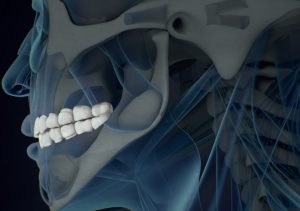 There are many aspects to your oral health and bite function that could become areas of concern before you realize it. In some cases, lesser known consequences of things like chronic periodontal disease or tooth loss can affect other structures, such as the bone structure in your upper and/or lower dental ridges. If your jawbone’s health and integrity have been impacted in a way that has caused it to lose mass and density, then jawbone grafting could be the best solution for fortifying it.
There are many aspects to your oral health and bite function that could become areas of concern before you realize it. In some cases, lesser known consequences of things like chronic periodontal disease or tooth loss can affect other structures, such as the bone structure in your upper and/or lower dental ridges. If your jawbone’s health and integrity have been impacted in a way that has caused it to lose mass and density, then jawbone grafting could be the best solution for fortifying it.
The point of jawbone grafting
A jawbone graft describes a surgical procedure during which a small amount of donor bone and/or biocompatible grafting material is bonded to a weakened area of jawbone structure. The purpose of the procedure is to strengthen the jawbone’s health and integrity by restoring some of the mass and density that it has lost. This can be important to reestablishing the proper balance and healthy function of your bite when your jawbone has grown weaker. It can also be an essential factor in preparing for dental implant placement, especially if you’ve lost a significant number of teeth.
The difference between grafting procedures
Because your upper and lower jawbone structures are different, grafting procedures can also differ for every patient. For example, the lower jawbone, or mandible, is the more dense of your dental ridges. Ridge augmentation may be performed to enhance the strength and integrity of your lower jawbone in a relatively straightforward grafting procedure. However, your upper dental ridge is extremely close to your largest sinus, the floor of which can make bone grafting more complex. A sinus lift involves raising the sinus floor slightly to make room for the grafting material and the enhancement of the upper dental ridge.
The role it may play in your implant treatment
While there can be several potential reasons for needing jawbone grafting, one of the most common is in preparation for dental implant placement. The loss of one or more teeth roots can significantly impact your jawbone structure, causing it to grow weaker due to a lack of stimulation. Before utilizing dental implant posts to replace the lost teeth roots, you may require a grafting procedure to strengthen the supportive foundation of your smile. This can help ensure that there is adequate healthy bone structure to heal to the implant posts, as well as to support them as they absorb the pressure of your bite.
Learn about the importance of jawbone grafting
When your jawbone has grown weaker and needs a boost in strength and integrity, the right jawbone grafting procedure could help build it back up. To learn more, schedule a consultation by calling Santa Rosa Oral Surgery in Santa Rosa, CA, today at 707-545-4625.

